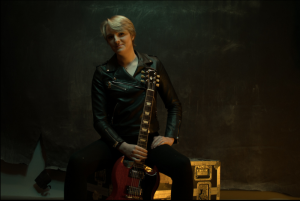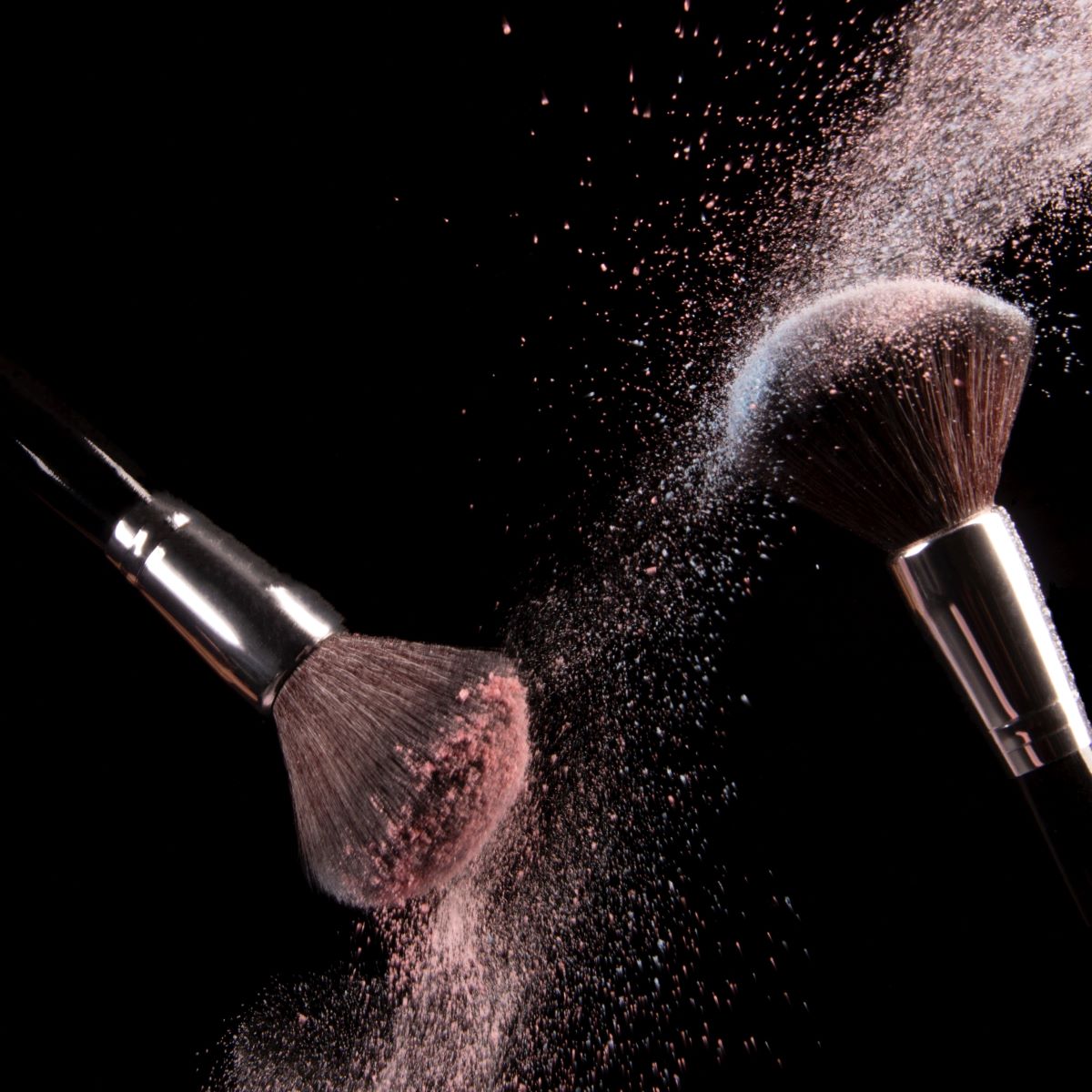by Lucy Rose.
A few words before we start…

Firstly, I want to thank you for taking the time to read the latest entry of my series, Transgendered Substantiation. The series has been adapted from blogs I wrote for my website during my transition, based on my thoughts and feelings at the time. They almost represent, then, a time capsule for that period of my life. I have done my best to edit and update them for this publication, but some areas may be out of the date, especially regarding the administrative side, as some parts of the process may have changed since I went through it myself.
My ultimate aim with this series is to help people by shedding a light on the transition process. While everyone’s experiences are different, and this is but one person’s perspective, if this is something you are going through yourself, it is my hope that it helps you know that though it may be a daunting process, it is not insurmountable and there is nothing that cannot overcome. Or, if you are a friend or loved one of someone going through the process, it helps you understand what they may be thinking or feeling or the challenges they are facing.
With everything said, please enjoy this week’s entry.
Volume 5 – Hair, hair removal and make-up
A disclaimer before I start. This post will be like the last one that will focus on the logistics of presenting, here to serve as a guide for those who are just starting out and may need a few pointers to get them going. Also, this will be from the perspective of a male-to-female trans-person as that’s my experience. My hope is that this blog series will, in time, be a comprehensive guide that covers every step of the transition process, through the psychological as well as the physical. It is something I could have used myself when I was first starting to explore and dress.
Hair
Right: hair. I covered wigs slightly in my previous post, so I’ll focus on hair this time. What hair you decide to go with is really up to you. I started by growing my hair out, eventually circling back round to short hair. I was nervous about going to a salon, as it’d be with a new group of people and I knew I’d feel inadequate presenting there before the stereotypically stylised staff. And if I went presenting as male, I’d feel out of place, like an intruder, and that I hadn’t progressed as much as I’d wished; my life was still the dichotomy, preserved in limbo. But I was reminded that there are hairdressers that can come to your home and work with you there. It also gives you a chance to correspond with them beforehand and let them know the situation so you can both work to the same outcome. This might be something you wish to explore. I’ve since managed to go to salons and found them welcoming and helpful.
Hair removal
Hair removal covers several areas. I’ll begin with the legs and body. The amount of hair can change drastically from person to person. I started off by removing the hair from my legs with a hair removal cream, like Veet or Nair. It’s a good way of painlessly (but no odourlessly) getting rid of long, coarse hair. After that, it becomes a battle of maintenance. You can either go with the razor option and spend an half-hour in the shower each week or you can wax. This can either be done through at-home kits, or at beauty parlours. I went with parlours and thankfully had a very understanding beautician in whom I could confide my reasons for being there. Even though waxing does hurt, it has many benefits. The hair remains gone for longer and when it comes back, it does so finer and softer. So even if you decide to only do a six-session course, it’ll help in the long run and make shaving easier down the road. Hormones will also help in this regard, but I’ll leave that for a future entry.
Facial hair
Hair removal on the face is quite tricky. Along with getting your legs waxed, I’d recommend doing your eyebrows at the same time, to shape them. It can have a surprisingly noticeable effect feminising a face. But to the crux, and that’s facial hair. Before I began the transition, I was cursed with the ability to grow a fine beard, so when I chose to present, I had to wet-shave and pray I didn’t cut myself. I sought permanent hair removal during the time I had between seeking referral and my first appointment at the gender clinic (I’ll talk more in depth about this span of time in a future entry). There are three methods of permanently removing facial hair: electrolysis, epilation or laser-treatment. They each have their pros and cons.
- Electrolysis: Covered under the NHS (in the UK), but occurs later in the transition process, and only if you go through their system. This involves heated needles pulling out hairs individually by the bulb after shocking them with small jolt of electricity It’s therefore a more targeted method and achieves better long-term results, but can cause scarring due to its intrusive nature. It’s also more difficult to find in clinics outside the NHS. I had a trial done between it and epilation and found that it was less effective but also less painful.
- Epilation: This can only be found at beauty parlours, I believe, and uses vibrations to wiggle the hair bulbs free from the pores, tweezers then plucking them free. Unlike electrolysis, this depends on the stage of the growth cycle for that particular bulb on whether it’ll wiggle out or not. For those that did get plucked, I found this method more effective than electrolysis during the trial I had between the two, but also more painful. I believe their price would be roughly the same and most parlours should off both.
- Laser-treatment: This was the option I chose. Most private clinics offer laser hair-removal. I went with the Harley Medical Group and am very happy with the results. It’s non-intrusive, so at worse leaves red blotches or a scab that heals in a couple of days. However, you need many more courses, especially for fairer hair the laser finds harder to zap. It is very painful, too much for some others I’ve spoken to, so be prepared. They normally offer a free consultation for you to try it out and see if it’s for you, so don’t worry if it’s too much. They usually have discounts over a course, so the price can be doable. Sessions usually occur a month apart, becoming more spread out as the course goes on and hair fades. The consultants, I’ve found, get people seeking hair-removal for a transition quite often so were very understanding when I told them. I’ve since stopped these treatments as they reached all that they could achieve. I still have some light hairs around the chin and lips, but nothing a shave three times a week won’t fix.
I’d recommend researching each method depending on what’s available in your area, what amount of removal you’ll personally need and the kind of budget you have. Transitioning is not cheap. Depending on what kind of medical coverage you can get and what surgeries you decide to have (in the UK), the cost can range anywhere from £5,000 to £15,000+. But don’t feel daunted. This is spread out over about 3-4 years and the bulk comes from optional surgeries that aren’t covered by the NHS (in the UK). I’ll talk about this is a post toward the end of the series for those who are considering any operations.
Make-up
But now, we’re onto make-up. This is another factor that can change from person to person, depending on skin tone, face-structure, etc. I’ve personally found that keeping it simple is better for everyday living. There are plenty of make-up tutorials on YouTube, many of which are trans-specific. The gear that I personally find works best for me is:
- Foundation: This I get in two tones, one that matches my skin colour, and another slightly darker. I then use these to subtly contour. The lighter tone goes in a T-shape above the eyebrows and down the nose; under the eyes and around the mouth. And the darker shade at the top of the forehead and beneath the cheekbones. I then blend to a smooth covering and leave for a few minutes to dry. There are contour face-maps on the internet if you want a more visual guide.
- Eyeliner: While I wait for foundation to dry, I use liquid eyeliner on the upper lash. Eyeliner is tricky to use at first and takes practice. You might find pencil eyeliner on the lower waterline or beneath the lower lash easier and works better for your eye shape. Either way, experiment and find what works. For nights out, I mix the two and use pencil eyeliner on both waterlines, converging them in the outer corner where they meet the liquid upper lash to produce a small wing or point. This takes lots of practice to get right.
- Mascara: I was blessed with long eyelashes so mascara for me is quite easy to apply, but the secret is to build it in layers, focusing on flicking the outer corner, curling it toward the far tip of your eyebrow. If you can get your eyeliner to match this beneath you can get a subtle effect that really opens the eyes and produces a good result.
- Powder: I found blush to be too stark for my skin tone, but you may find it good to highlight your cheekbones and produce and more defined look. For me, I basically repeat what I did with foundation but with two-tone powder instead. The trick here is in not using too much and blend it in with the bare skin of your neck and behind your ears, and to only subtly trace out under the cheekbones with the darker powder otherwise it can look odd having two great shadows on your face.
- Lipstick: Unfortunately, my lips are pretty bland and hard to work with so I stay away from lipstick most of the time. I’ve no advice here except to watch video tutorials.
It’s hard to describe how to use make-up without a visual medium, so YouTube is your best friend in this regard. Hopefully, I’ve given you some ideas. It does take some getting used to, however, having all this product on your face, and how it can feel like an extension of the deception. To me, though, it’s a realisation of form that hormones will eventually enable. It’s a head-start. As with dressing, it’s just one more piece to the puzzle to give myself the ability to take control of my life, one stroke at a time.

